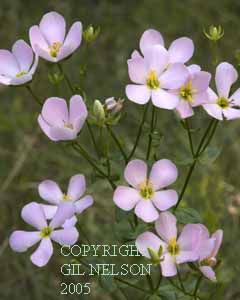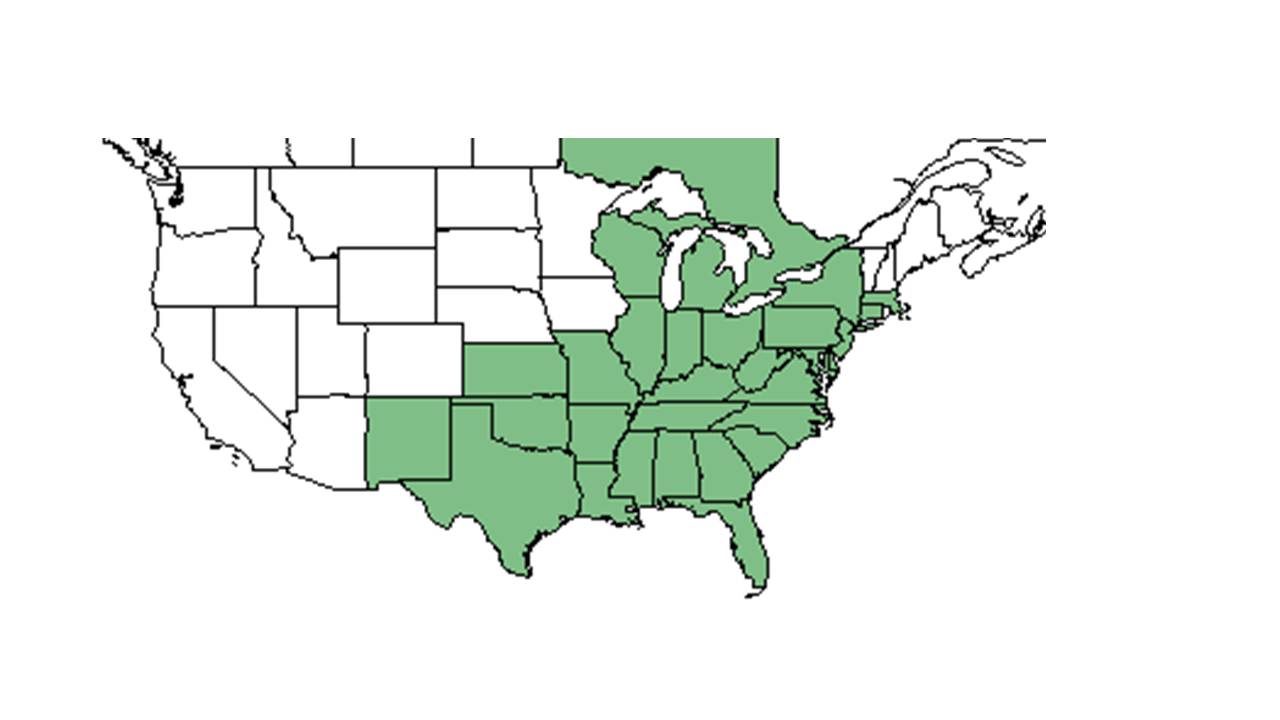Difference between revisions of "Sabatia angularis"
KatieMccoy (talk | contribs) |
|||
| Line 29: | Line 29: | ||
==Ecology== | ==Ecology== | ||
===Habitat=== <!--Natural communities, human disturbed habitats, topography, hydrology, soils, light, fire regime requirements for removal of competition, etc.--> | ===Habitat=== <!--Natural communities, human disturbed habitats, topography, hydrology, soils, light, fire regime requirements for removal of competition, etc.--> | ||
| + | In the Coastal Plain in Florida and Georgia, ''S. angularis'' can be found in floodplain forests, hardwoods, annually burned upland pine woodlands, annually burned savannas, upland pines, and limestone glades. Associated species include ''Schoenus nigricans, Rhynchospora divergens'', and ''Juniperus'' (FSU Herbarium). | ||
| + | |||
===Phenology=== <!--Timing off flowering, fruiting, seed dispersal, and environmental triggers. Cite PanFlora website if appropriate: http://www.gilnelson.com/PanFlora/ --> | ===Phenology=== <!--Timing off flowering, fruiting, seed dispersal, and environmental triggers. Cite PanFlora website if appropriate: http://www.gilnelson.com/PanFlora/ --> | ||
It blooms from July to August (Nelson 2006). | It blooms from July to August (Nelson 2006). | ||
Revision as of 15:30, 13 October 2015
| Sabatia angularis | |
|---|---|

| |
| Photo taken by Gil Nelson | |
| Scientific classification | |
| Kingdom: | Plantae |
| Division: | Magnoliophyta – Flowering plants |
| Class: | Magnoliopsida – Dicotyledons |
| Order: | Gentianales |
| Family: | Gentianaceae |
| Genus: | Sabatia |
| Species: | S. angularis |
| Binomial name | |
| Sabatia angularis (L.) Pursh | |

| |
| Natural range of Sabatia angularis from USDA NRCS Plants Database. | |
Common names: Bitter-bloom, Common Marshpink, or Rosepink (Nelson 2006).
Contents
Taxonomic notes
Description
Distribution
It is found in upland forests, forest edges, glades, and meadows. It is mostly an upland species, but sometimes will be seen along the edges of upland streams (Nelson 2006).
Ecology
Habitat
In the Coastal Plain in Florida and Georgia, S. angularis can be found in floodplain forests, hardwoods, annually burned upland pine woodlands, annually burned savannas, upland pines, and limestone glades. Associated species include Schoenus nigricans, Rhynchospora divergens, and Juniperus (FSU Herbarium).
Phenology
It blooms from July to August (Nelson 2006).
Seed dispersal
Seed bank and germination
Fire ecology
Pollination
Use by animals
Diseases and parasites
Conservation and Management
Cultivation and restoration
Photo Gallery
References and notes
Nelson, Gil. Atlantic Coastal Plain Wildflowers: A Field Guide to the Wildflowers of the Coastal Regions of Virginia, North Carolina, South Carolina, Georgia, and Northeastern Florida. Guilford, CT: FalconGuide, 2006. 86. Print.